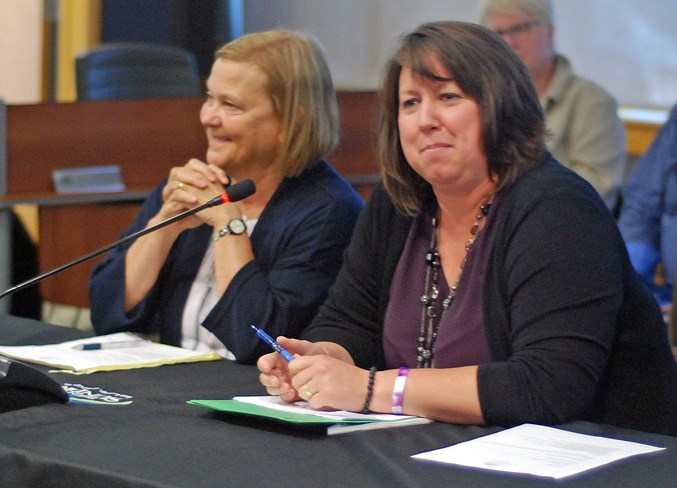A couple of Municipal Affairs accountability advisors observed last week’s council meeting.
Their visit was a part of the Municipal Accountability Program, which has the objective of helping small towns ensure legislative compliance with new regulations outlined in the Modernized Municipal Government Act.
“Our role as accountability advisors is to collaboratively foster effective local government and help build administrative capacity,” said Desiree Kuori, who was accompanied by her colleague Debbie McCann during the July 9 meeting.
Additionally, their mandate also includes providing advisory support and services to municipalities throughout Alberta to help ensure compliance with provincial legislation, said Kuori.
Meeting all of the regulatory requirements outlined by the government can be overwhelming and challenging, especially with the new changes in the Modernized Municipal Government Act, she said.
Shaye Anderson, the minister of Municipal Affairs, announced earlier this year an initiative called the Municipal Accountability Program, which will involve the participation of every town with a population less than 5,000. Every four years, these municipalities will be subject to a review under the program, she said.
“The intent of the program is to help municipalities achieve legislative compliance.”
Throughout the collaborative process, she said the Municipal Affairs advisors will be working in tandem with Sundre’s chief administrative officer Linda Nelson and eventually develop a report for administration and council.
“Our attendance tonight is simply to observe council’s meeting. We’ll look at legislative procedures like recorded votes and passing bylaws, and that information will help with the final report.”
Once completed, she said the report will “include recommendations and resources for any items that we find that don’t quite meet the legislative requirements. The municipality will then have eight weeks to respond to the ministry with an action plan on how to remedy those items.”
The report will not have any confidential information and can be made public, she added, opening the floor to questions from council.
Seeking clarification regarding the program’s focus on smaller communities, Coun. Richard Warnock asked whether the government had the impression that municipalities with populations over 5,000 are faring better than their smaller counterparts.
“Since 2015, the amount of requests for petitions that have come in from municipalities for inspections, the majority have been from municipalities with populations of 5,000 or less,” answered McCann.
Coun. Paul Isaac pointed out that small towns like Sundre often have elected officials who not only work full-time but also are heavily invested in volunteer commitments in their communities. With 80- to 90-hour weeks, finding the time to absorb and understand the changes to the Modernized Municipal Government Act is a big task, he said.
“In Calgary, I wouldn’t have to worry about that, because I would have a full-time job. I’m certainly not complaining, because I can choose not to run. But that’s a reality in a small town. From your department, how do you help us?”
Kuori expressed unreserved confidence in the services the ministry provides.
“You can call on us at any time,” she said.
“The challenges of a small-town elected official are great, there’s no doubt about it.”
Administrative staff such as Nelson are also a crucial resource that elected officials can turn to for advice, she added.
“You have a wonderful CAO in Linda — she is always there to help you with learning legislation or answering questions.”
The government also has quick fact sheets covering a variety of topics pertaining to municipal operations, but if a councillor is “researching something and we don’t have it, we want to hear about it.”
Nelson said during a phone interview that she expects the report will take about a month to prepare and submit. There is a lot of information for the advisors to review and Sundre is not the only municipality involved in the program. Out of 352 municipalities throughout the province, 73 per cent have populations under 5,000, she said.




